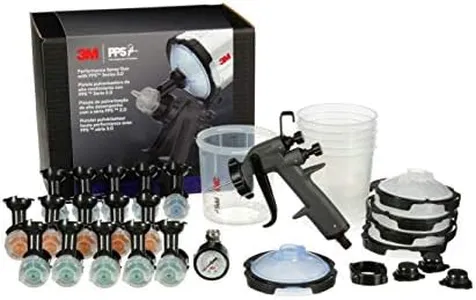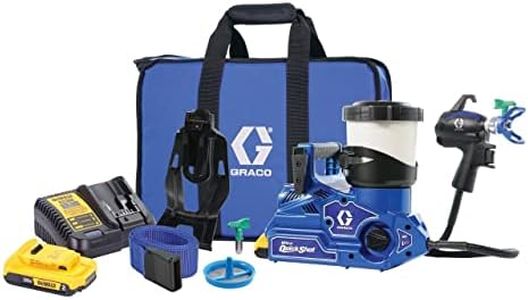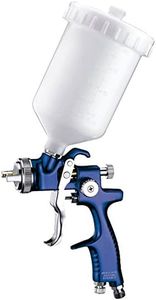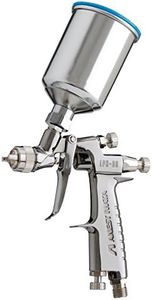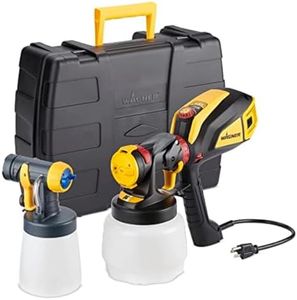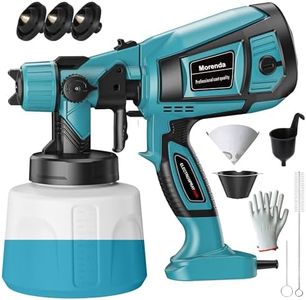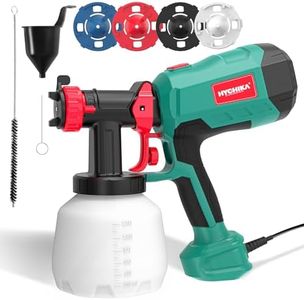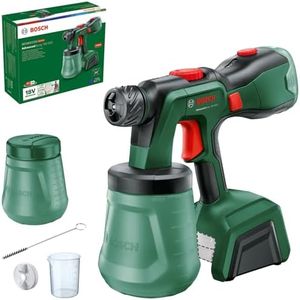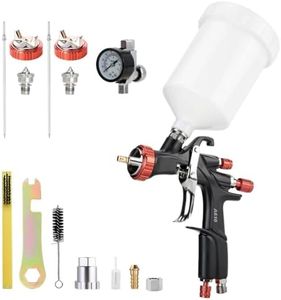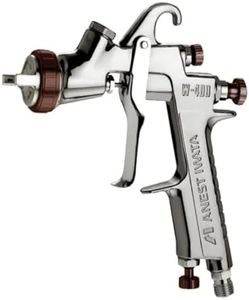We Use CookiesWe use cookies to enhance the security, performance,
functionality and for analytical and promotional activities. By continuing to browse this site you
are agreeing to our privacy policy
10 Best Automotive Paint Sprayer
From leading brands and best sellers available on the web.By clicking on a link to a third party's website, log data is shared with that third party.
Buying Guide for the Best Automotive Paint Sprayer
Choosing the right automotive paint sprayer can make a big difference in your painting results, whether you're touching up a small area or doing a full car respray. The key is to think about how and where you'll be using the sprayer, the kind of paint you'll work with, and your desired finish quality. Understanding the main features and specifications will help you find a sprayer that fits your needs and skills, making your job easier and your results more professional.Type of SprayerAutomotive paint sprayers generally come in three types: HVLP (High Volume Low Pressure), LVLP (Low Volume Low Pressure), and conventional/compressed air sprayers. HVLP sprayers produce less overspray and waste, making them popular for detailed work and for beginners. LVLP sprayers use less air and are good for smaller compressors and fine finishing. Conventional sprayers are known for speed but usually create more overspray and require larger compressors. Choosing the right type depends on your project size, desired finish, and what kind of air compressor you have or are willing to get.
Nozzle SizeNozzle or tip size determines how much paint comes out and what kind of finish you get. Smaller nozzles work best for thin paints, clear coats, or fine details, while larger nozzles allow for thicker materials like primers. Nozzles typically range from 1.0mm to 2.5mm or more. For general car painting with basecoat and clearcoat, a 1.3-1.5mm tip is typical, while primers may require 1.7-2.2mm tips. Match the nozzle to the paint type and the area you're spraying: detailed touch-up = smaller; large panels or primed surfaces = larger.
Paint Cup CapacityPaint cup capacity refers to how much paint the sprayer can hold at once. Smaller cups are lighter and easier to handle for detail work, but require frequent refills on large projects. Larger cups let you paint continuously over big surfaces, but can be heavier and harder to maneuver. Think about the size of your projects: if you mainly do small touch-ups, a small cup is fine, but for full body or large repairs, a bigger cup will help you work faster.
AdjustabilityMost automotive paint sprayers offer adjustments for material flow, air pressure, and spray pattern width. This lets you fine-tune how much paint comes out and how wide or narrow your spray is. More adjustability means more control over your final finish, which is helpful for both beginners and those aiming for professional results. Look for sprayers with easy-to-use adjustment knobs if you want smooth application and flexibility for different tasks.
Ease of CleaningCleaning your paint sprayer well is crucial to prevent clogs and ensure it works properly the next time. Sprayers with simple designs, fewer parts, and easy-access components are generally easier and quicker to clean. Removable paint cups and smooth internal surfaces can also help. If you plan to switch paint types or colors often, or just want less hassle after a job, prioritize models known for being simple to disassemble and clean.
Air ConsumptionAir consumption describes how much compressed air the sprayer needs to function properly, often measured in CFM (cubic feet per minute). If you’re using a compressor, it's important to match the sprayer’s air requirements to your compressor’s output. Lower air consumption is great for smaller compressors; higher consumption requires larger, more powerful compressors. Always check the CFM requirement to ensure you won’t run out of air pressure mid-job.
